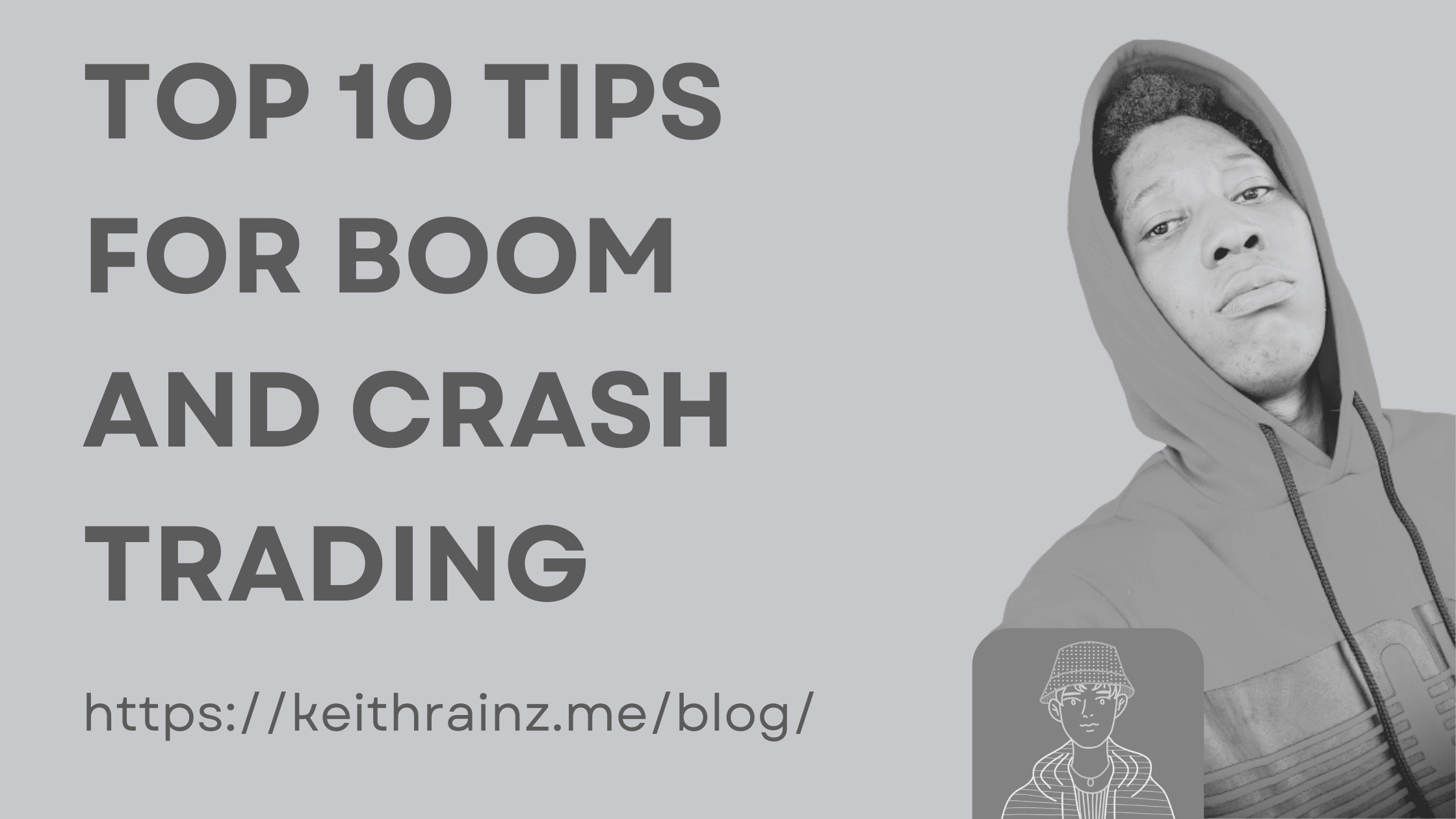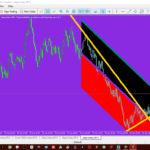Boom and Crash indices have become incredibly popular among traders in Zambia and around the world due to their unique price patterns and volatility. These synthetic indices are designed to mimic market behavior but with more predictable “spikes,” offering profitable opportunities for skilled traders.
If you’re a beginner looking to start trading Boom and Crash indices, it’s important to approach this form of trading with the right strategies, tools, and mindset. In this article, we’ll explore some of the top tips that can help you get started on the right foot in Boom and Crash trading.
Top 10 tips for beginners in Boom and Crash Indices trading
1. Understand the Nature of Boom and Crash
Before jumping into trading, it’s crucial to understand how Boom and Crash indices work:
- Boom Index: This index typically shows gradual upward movements followed by sudden drops or “spikes.” It’s important to note that Boom spikes occur when the market sharply drops, so you can anticipate price movements based on this behavior.
- Crash Index: In contrast, Crash shows slow declines followed by upward spikes. These upward movements (spikes) often catch traders by surprise, providing opportunities for buying.
Knowing the fundamental behavior of these indices will help you make better decisions and prepare for the spike events that are unique to Boom and Crash trading.
2. Start with a Demo Account
For any beginner trader, it’s essential to start with a demo account. Demo accounts let you practice trading without risking real money. In demo mode, you can familiarize yourself with the Boom and Crash charts, learn how to spot trends and spikes, and test different strategies without the pressure of real-world trading.
This practice period will help you build confidence, understand market patterns, and improve your timing and risk management skills.
3. Master the Basics of Technical Analysis
Boom and Crash trading relies heavily on technical analysis. This involves studying historical price movements using various charting tools, indicators, and patterns to predict future market movements. Some important tools for technical analysis include:
- Candlestick Patterns: Learn to recognize key candlestick patterns like bullish or bearish engulfing, doji candles, and pin bars to determine market sentiment.
- Support and Resistance Levels: These levels help you identify price points at which the market may reverse. Knowing when the market approaches a support (for Crash) or resistance (for Boom) can help you make profitable entry and exit decisions.
- Moving Averages: The moving average can help you smooth out price data and identify the overall direction of the trend. Use tools like the 50-period and 200-period moving averages to assess whether the market is trending up or down.
A good understanding of these basic charting techniques will help you make more informed decisions when trading Boom and Crash indices.
4. Use Risk Management Strategies
Boom and Crash markets can be highly volatile, so risk management is essential. One key aspect of risk management is position sizing. Ensure that you don’t risk more than a small percentage of your trading capital per trade. A common recommendation is to risk no more than 2% of your trading balance on any single trade.
Other risk management tips include:
- Use Stop-Losses: Always set a stop-loss to limit potential losses. This is especially important in the highly unpredictable Boom and Crash spikes.
- Set Take-Profit Levels: Similarly, set clear take-profit levels to lock in profits before the market reverses.
- Use Proper Leverage: If you’re using leverage, ensure it’s appropriate for your account size. High leverage can increase both profits and losses.
By following these risk management techniques, you reduce the chances of blowing your trading account during periods of high volatility.
5. Watch for Spikes and Timing
One of the most important aspects of trading Boom and Crash indices is timing your entries and exits to take advantage of the spikes. Here’s how you can use spikes to your advantage:
- For Boom Trading: Boom spikes occur after a steady upward trend. Traders often sell when the price begins to drop following a spike. The key is to wait for the price to rise to a resistance level and then look for a possible drop to sell.
- For Crash Trading: Crash spikes occur after a downtrend. Traders typically buy when the price begins to spike upwards after hitting a support level.
To time these spikes well, you need to monitor the charts closely and be patient. Many beginners rush into trades, but timing is crucial in Boom and Crash trading. Avoid impulsive decisions and wait for confirmed signals from the market before entering a trade.
6. Focus on One Index First
As a beginner, it’s wise to start by focusing on either Boom or Crash instead of trading both indices simultaneously. This allows you to better understand the behavior of the chosen index and fine-tune your trading strategies.
Starting with one index will make it easier for you to:
- Identify trends more clearly.
- Practice risk management without overwhelming yourself with too many variables.
- Build confidence in your trading abilities before diversifying to other markets.
Once you’re comfortable with one index, you can then expand to the other or explore more advanced trading strategies.
7. Use Indicators for Confirmation
While Boom and Crash indices are straightforward, using a few reliable indicators can provide confirmation of your analysis and improve the accuracy of your trades. Some useful indicators for Boom and Crash trading include:
- Relative Strength Index (RSI): RSI is a great tool for spotting overbought and oversold conditions. In Crash, if the RSI shows oversold conditions, it might signal a buying opportunity. In Boom, overbought conditions may signal a potential selling opportunity.
- Moving Average Convergence Divergence (MACD): The MACD can help you spot trend changes by analyzing the difference between two moving averages.
- Bollinger Bands: These bands can help you determine volatility. When the price is near the lower Bollinger Band, it might indicate a potential buy in Crash; conversely, when it is near the upper band in Boom, it could signal a sell.
Using indicators in conjunction with price action can increase your chances of making successful trades.
8. Stay Updated on Market News
Even though Boom and Crash indices are synthetic and not directly influenced by traditional market events, staying informed about global economic news and trading psychology is still important. The sentiment of the broader market can influence synthetic indices indirectly, especially when the general market mood is risk-averse or risk-on.
Keep up with the latest forex news, economic calendars, and geopolitical events to understand the overall market sentiment. This will help you gauge when volatility might increase, leading to more opportunities for trades.
9. Practice Patience and Discipline
Patience and discipline are key virtues when trading Boom and Crash indices. Avoid chasing after quick profits and make sure you’re following a solid strategy. Impulsive decisions, especially under emotional pressure, can lead to significant losses.
To cultivate patience:
- Stick to your trading plan.
- Wait for clear signals before entering or exiting trades.
- Do not trade in volatile conditions unless you’re experienced.
Learning when to wait and when to act is vital to becoming a successful trader.
10. Learn from Your Mistakes and Keep Improving
Finally, always learn from your mistakes. No trader is perfect, and losses are inevitable, especially in the beginning. The key is to learn from them and continuously improve your strategies. Keep a trading journal to track your trades, analyze your successes and failures, and refine your approach over time.
Conclusion
Boom and Crash trading offers an exciting opportunity for beginners to profit from the volatility of these synthetic indices. By following the tips above—starting with a demo account, mastering technical analysis, managing risk, timing spikes, and practicing patience—you can significantly increase your chances of success.
With consistent practice and dedication, you’ll be able to develop a deeper understanding of these markets and refine your trading strategies over time. Stay disciplined, keep learning, and always manage your risks to succeed in Boom and Crash trading.







